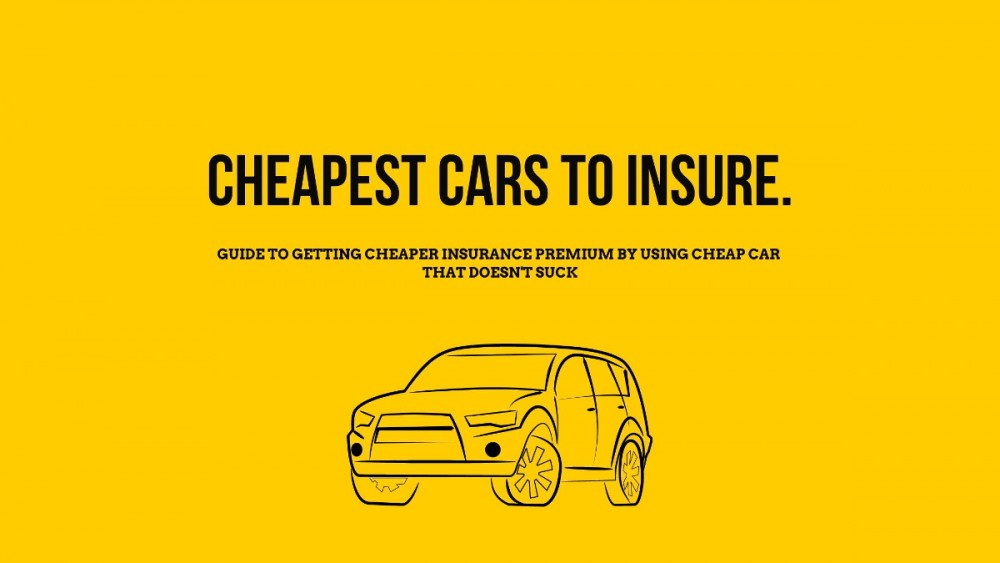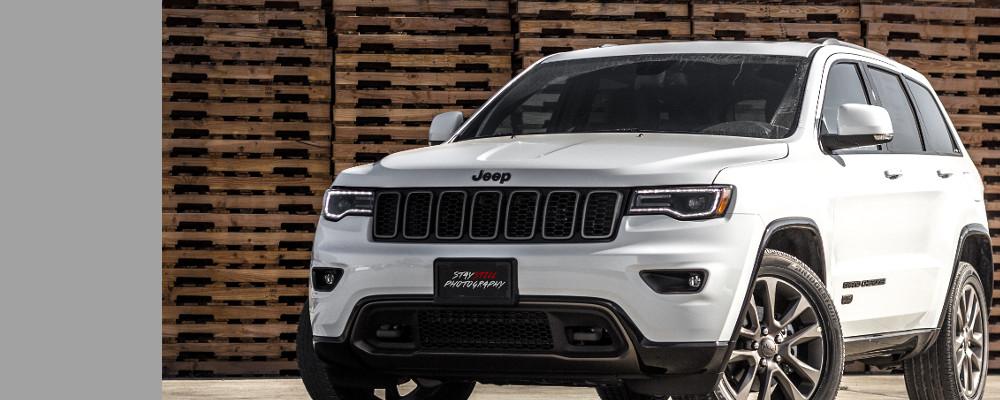
When it comes to buying a car, it’s not just the sticker price you have to consider - it’s also the cost of insuring the damn thing. Those seemingly manageable monthly premiums might seem small in isolation, but they soon add up over the lifetime of the vehicle.
An example should make this point clear. Average insurance premiums across all vehicles is $1,556 per year, according to the Business Insider. Multiply that figure by the average lifetime of a modern vehicle - about ten years - and you wind up with a total cost of insurance of $15,480 over the vehicle's lifetime.
Now that’s a considerable sum of money!
And, remember, many people pay much more than that. If your insurance premiums total $3,000 per year, that’s $30,000 you’re out of pocket.
No wonder people are so interested in cars that are cheap to insure.
In this article, Insure Mojo has put together all the information you need to get your insurance costs down. You’ll learn which vehicles offer the lowest insurance rates, and you'll find out how to avoid paying more than you absolutely need. Ultimately, you’ll be in a much better position to tackle excessive motoring costs head-on.
Top 20 Cheapest Cars To Insure
There are two ways of defining the cheapest cars to insure.
The first is just to look at average premiums for the model across all insurance policies. This absolute measure is just the dollar value that people pay: pretty straightforward.
The second method is to measure the cost as a percentage of the MSRP of the vehicle. In this case, you’re trying to figure out the relative price of insurance. Both are valid ways to go about comparing the cheapest cars, and we use both.
The Top 20 Cheapest Cars To Insure, Dollar Value
You’ll notice that there’s no particular logic to this list. There’s a slight bias towards Japanese-made cars - perhaps owing to reliability - but that’s about it. Cars at the top are relatively small and inexpensive, which makes sense. But there are some larger vehicles, like the Subaru Crosstrek in the mix too. The cheapest car, the Mazda CX-3 Sport, costs $1,324 per annum to insure. The most expensive - the Chevrolet Express G 2500 LS - comes in at $1,416 - still considerably less than the average cost of insurance in the US.
The fact that the CX-3 Sport is the winner shouldn’t come as too great a surprise. It offers among the best safety features of any vehicle in its class. And it has a relatively small engine. The Honda CR-V LX is similar. Like the Mazda, it, too, offers exceptional crash-mitigation technology.
This list of cheapest cars to insurance in absolute dollar values is as follows:
| Mazda CX-3 Sport | $1,324 |
| Honda CR-V LX | $1,333 |
| Wrangler Sport S | $1,334 |
| Subaru Outback 2.51 | $1,335 |
| Fiat 500X Pop | $1,336 |
| Honda Odyssey LX | $1,353 |
| Subaru Forester 2.51I | $1,373 |
| Mazda CX-5 | $1,374 |
| Jeep Renegade Sport | $1,374 |
| Honda HR-V LX | $1,377 |
| Honda Fit LX Sensing | $1,379 |
| Jeep Compass Sport | $1,392 |
| Subaru Crosstrek | $1,392 |
| Ford Escape S | 1,397 |
| Chrysler Pacifica Touring | $1,403 |
| Buick Encore Preferred | $1,403 |
| Hyundai Tucson SE | $1,403 |
| GMC Canyon | $1,411 |
| GMC Savana G2500 LS | $1,413 |
| Chevrolet Express G 2500 LS | $1,416 |
The Top 20 Cheapest Cars To Insure, Relative To MSRP

When you look at the cheapest cars relative to their MSRP, you wind up with fundamentally different results. Here’s the rundown:
| Ford Explorer | 4.47% MSRP |
| Grand Cherokee | 4.68% MSRP |
| Toyota Highlander | 4.82% MSRP |
| Subaru Outback | 4.84% MSRP |
| Chevrolet Traverse | 4.94% MSRP |
| GMC Sierra | 4.95% MSRP |
| Jeep Wrangler | 5.01% MSRP |
| Dodge Ram 1500 | 5.02% MSRP |
| Ford F-150 | 5.24% MSRP |
| Honda CR-V | 5.75% MSRP |
| Tesla Model 3 | 5.83% MSRP |
| Jeep Cherokee | 5.83% MSRP |
| Fiat 500X | 5.85% MSRP |
| Ford Escape | 5.91% MSRP |
| Ford Transit Connect | 6.06% MSRP |
| Toyota Tacoma | 6.09% MSRP |
| Kia Sportage | 6.15% MSRP |
| Nissan Rogue | 6.27% MSRP |
| Chevrolet Equinox | 6.35% MSRP |
| Jeep Compass | 6.59% MSRP |
Again, you can see that the list is fairly jumbled in terms of make and model. However, this time around, imported cars fare less well. US brand Ford tops the tips, with Dodge, GMC, and Tesla, all posting decent results.
Seeing insurance as a percentage of MSRP helps to bring home the costs associated with running a vehicle. Within five years, you spend around 20 to 30 percent of the vehicle's base cost, just in insurance fees. And these are the cheapest models to insure. It can get much more expensive if you go for premium versions.
Model type is one of the most important factors that affect the cost of car insurance. As we’ve seen, cars like the Honda CR-V, Wrangler Sport, and Subaru Outback all have exceptionally low premiums. That’s because these models have favorable characteristics associated with them. For instance, insurers know that criminals are very unlikely to steal the Subaru Outback, so they don’t have to fork out for replacements regularly.
Similarly, the Japanese cars at the top of the list have excellent safety features. This fact means fewer legal liability costs and a lower chance of accidents.
The trim level of a car also has a meaningful impact on car insurance rates. Figures suggest that entry-level versions of cars can cost up to $200 per year less than their premium counterparts, so going basic can pay off in the short and long-term.
Car Makes With The Cheapest Car Insurance Rates
As you might expect, there are also differences in car insurance rates when you compare them across manufacturers. Luxury brands are, in general, more expensive to cover, while owners of budget and mainstream automakers often benefit from cheaper rates.
Here’s a rundown of the cheapest makes:
- Honda
- GMC
- Chrysler
- Chevrolet
- Kia
- Toyota
- Ram
- Dodge
- Ford
- Volkswagen
Honda, again, tops the list, followed by other budget and mid-range options. The likes of Porsche and Range Rover are conspicuously absent.
The primary reason for differences in prices across makes is desirability. Criminals are more likely to target luxury cars than run-of-the-mill varieties, and insurance costs reflect this. Outlays for the Honda CR-V LX are relatively low because the car is more common and, often, less of a target for criminals. BMW and Mercedes-Benz insurance is considerably higher, partly due to the increased risk of theft, and partly because of the higher base cost.
Car Types To Avoid Higher Insurance Rates
It won’t surprise you to find out that insurance rates also differ considerably across car types.
Electric Vehicles
Electric vehicles will, probably, eventually be cheaper to insure than their gas-powered brethren, but don’t expect that to happen any time soon. Higher base prices than equivalent gasoline cars plus the expense of replacing batteries mean that insurance costs for these vehicles are much higher than the mainstream.
Sports Cars
Sports cars are also more expensive to insure. Again, base prices for these vehicles tend to be much more than for average sedans. More importantly, young drivers drive them disproportionately, which pushes up the price for everyone else. Insurers have data suggesting that drivers of specific age groups are more likely to crash, so they factor them into their calculations.
There’s also the fact that sports cars are, in general, faster than regular cars and drivers more prone to speeding in them. This, in turn, increases both the risk and severity of accidents.
High-End Luxury Vehicles
Repair costs for high-end luxury vehicles are tremendous. In the event of an accident, insurers can frequently wind up paying tens of thousands of dollars for new wheels, body panels, and engine components.
Replacing vehicles outright is also extremely expensive. Many luxury vehicles are ten times the price of regular cars. The Bentley Bentayga, for instance, costs between $160,000 and $240,400 - and that’s just the basic model.
Of course, there are exceptions to the above. As we’ve seen, some electric vehicles are quite cheap to insure (such as the Tesla Model 3). But what we discuss above is a general pattern: bespoke, luxury and sporty cars generally imply higher insurance fees than regular hatchbacks and sedans. Partly it is a reflection of the raw costs associated with repairing and replacing these vehicles. And, partly, it comes from the higher risks of accidents and theft.
Cheap Types Of Car To Insure
Common sense would suggest that the bigger the car, the more expensive it is to insure. But, increasingly, the opposite is true in the US market. Pickup trucks and minivans are often among the cheapest to cover.
Suppose you’re looking for rock-bottom insurance for an everyday vehicle. Your best bet is to go for a small pickup truck, such as the Ford Ranger or the GMC Canyon. This type of vehicle is unlikely to get stolen, rarely suffers mechanical failures, and is driven by people who present a low risk to insurance companies. Other cheap options include small SUVs, standard-size pickups, and station wagons.
Interestingly, large sedans are among the most expensive as a class, mainly because they correlate with high-end vehicles.
Cheapest Cars To Insure For Teenagers

Teen drivers represent unique risks to insurance companies. While they might be legally allowed to drive on the public highway once they hit 16, they don’t always have the experience and skills to anticipate or avoid accidents. Therefore, parents are rightly worried about their safety and the cost of getting them on the road.
The good news is that there are things that parents can do to keep premiums reasonable.
The first is to buy children the types of vehicles with the lowest premiums. As we discussed above, these include small SUVs, small pickups, and minivans.
Second, you can drill down further into these categories, looking for vehicles with excellent safety features and smaller engines. A Fiat 500X with a 1.0-liter engine will cost much less to insure than one with a 2.5-liter Chrysler Tigershark engine, for example.
Another tactic is to choose cars with low base prices. While this strategy might limit your options, it helps to appease insurers who are worried about high replacement costs, should your teen write the car off.
Here are the least expensive cars to insure for teens. (All prices are base prices - no optional extras)
| Honda Civic 4-Door - $20,650 |
| Mazda 3 - $21,500 |
| Toyota Prius - $24.500 |
| Honda Accord - $24,270 |
| Mazda 6 - $24,000 |
The Honda Civic tops the list of lowest insurance cars for teenagers for several reasons.
The main cost-lowering feature is the vehicle's remarkable IIHS safety record. The vehicle has been getting scores at the top of the charts ever since 2006 and continues to excel. It features multiple airbags (including front-seat-mounted torso bags), reverse camera, electronic stability control, and daytime running lights.
The Mazda 3 comes in a close second for many of the reasons we discussed above. Excellent safety ratings across all categories mean that insurers view this car favorably.
The Toyota Prius seems like an unlikely inclusion on this list, but it comes with multiple technologies to assist teenage drivers. These include anti-lock brakes, side airbags, driver knee airbags, and electronic stability control. It’s also a good car for any teen who cares about the environment.
The Honda Accord enters high on the list of cheapest cars to insure for teens for similar reasons to the Civic. The vehicle comes with all of the latter's tech, plus a rollover sensor that can tell when the vehicle is upside down in a ditch. Teens also get help from the brand’s proprietary LaneWatch technology, so they don’t accidentally stray out of the checked lines.
You can, of course, go down the second-hand route and get the upfront cost down even further. However, that may not affect insurance premiums considerably.
Conclusion
Fundamentally, we’ve discovered that insurance prices aren’t set in stone. The type of vehicles that you choose matters a lot. And savvy selections can lead to outsized savings, particularly when you add up the savings over multiple years.
